Did you know that US ecommerce sales reached 409 billion dollars in 2017? And they are expected to grow to a whopping amount of 638 billion dollars by 2022?
Though the ecommerce industry is seeing rapid growth, many brands struggle to boost their ecommerce conversions. Most of them focus on improving their carts and checkout pages to increase sales. But a majority of customers don’t even reach that point.
Many customers decide whether they want to buy your product or leave your store while they are on your product pages. So it’s really important for brands to create high-converting ecommerce product pages.
No matter how well you market your brand, or how much traffic you get, you are not likely to get sales with poorly optimized product pages.
So, what exactly should you do to get more conversions?
If you want to level up your product page game, check out seven of these best ways to boost your product page conversions.
Table of Contents
1. Analyze Your Ecommerce Product Pages
Spend a few minutes on your product page to analyze various elements and identify the ones that need work.
You want to provide your customers with a good experience. For this, you need to understand first what your customers get while they are on your product page.
Check whether or not your ecommerce product page:
- Loads fast
- Engages your customers at a glance with a clear product page design
- Provides sufficient information to help your customers buy the product they want
- Presents your product impressively with high-quality product photos
- Tells your customers about your brand
- Has compelling copy that can attract and retain customers
- Provides a good customer experience
If any of these are not right about your product page, you need to consider optimization.
Want a simple solution?
Create an optimized product page using Unbounce. It is a landing page builder that can help you create engaging and high-converting product pages for your website.
2. Use Impressive Product Photos
Would you trust a store that failed to properly photograph their products?
Product photos help your customers form their first impression of your product. They can either attract or turn them away. It’s often by looking at your product photos that your customers decide whether or not they should keep looking.
Use well-lit, high-quality images on your ecommerce product page. They must show your products the right way. Many ecommerce store owners prefer using a white or light-colored background for their product photos. Doing so can help you maintain consistency and emphasize your product.
Unlike retail stores, your customers can’t see, touch, feel, or try your products when they buy online. That’s why you should show your product from multiple angles. 33.16% of customers prefer to see multiple photos of a product before they make a purchase.
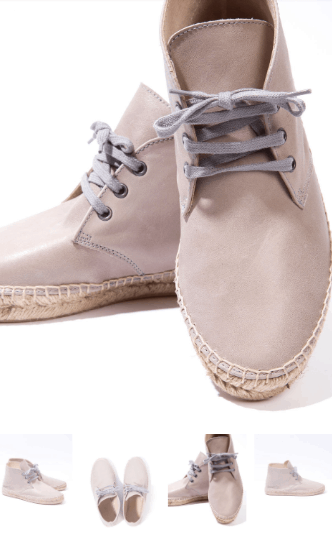
You can even include a 360-degree shot or a video that shows off all of the important features of your product.
You should also include a few in-context or lifestyle images of your product. It helps your customers form an emotional connection by visualizing a product as their own. It is a great way to tell visitors how they can use a product to improve their quality of life.
Looking for an easy way to create such images, videos, and animations?
Use PixTeller to create engaging product visuals to optimize your product pages and bring your imagination to life.
A home furnishing store, Pottery Barn, uses a variety of images to show off their products. Sometimes, they also include in-context videos that feature their product, just like this one for their drew embroidered pillow covers.
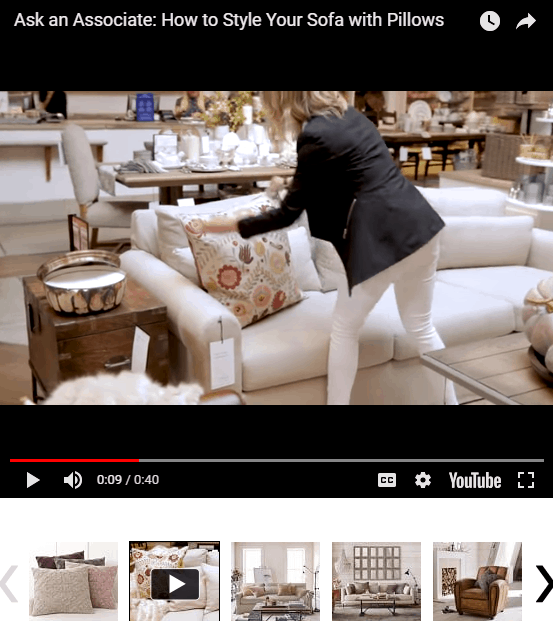
Product images are the best part of an ecommerce product page. Invest in professional product photography to encourage more customers to buy your products.
3. Optimize Your Ecommerce Product Page for Mobile
There is no doubt that mobile ecommerce or m-commerce is growing faster than ecommerce in general. As of December 2017, 82% of online shoppers in the United States shop using mobile devices. 35% of them are mobile-only online shoppers.
More than that, Google announced their mobile-first indexing update as well. If your ecommerce product pages are not mobile-friendly, you might lose traffic, sales, and revenue.
This has left you no choice but to optimize your site and product pages for mobile devices. Mobile-optimized product pages can help you:
- Improve the overall experience of your customers
- Help them buy from anywhere, anytime
- Facilitate faster checkouts with digital wallets
But, how can you create mobile-optimized pages?
Well, you can start by designing a mobile-optimized website using a BigCommerce theme. This is actually the best option for ecommerce stores as these themes are great for that purpose.
Many ecommerce businesses have shopping apps for both Android and iOS devices as well. These mobile applications provide an even better user experience than mobile websites.
If you have a decent budget, you can also develop and launch a shopping app to boost your ecommerce product page conversions.
4. Provide Detailed Product Content
Beyond product images, a great ecommerce product page should provide high-level information about the product. It’s the content that informs customers about the benefits and features of a product. It can convince them to buy from you.
Did you know that 88% of shoppers view detailed product content as being extremely important? An ecommerce product page should provide details such as:
- A relevant product title
- Price
- Important features and components
- The material of the product
- Care and maintenance instructions
- Information about the brand
- Size / dimensions / capacity
Make sure that you use a polite, engaging, and personal touch in your product descriptions. Tell your customers why they should choose your product over others.
You should optimize your ecommerce product page content the for search engines too. This will help you rank higher in SERPs and, thereby, bring in more customers in the first place.
You can also provide other useful resources or how-to-use guides to help them.
Writing a unique product description can be challenging. You should keep the following points in mind:
- Keep your product descriptions short and sweet.
- Include engaging copy that speaks of your brand.
- Optimize the content for your product page keyword.
- Use a clear structure, headings, and bullet points to improve readability.
- Include relevant specifications.
All of this information should be relevant, useful, and easy to understand for your customers.
Marucci Sports, a brand of premium sports products and apparel, makes effective use of their product descriptions on its ecommerce product page. They give their best shot to help customers at every point of their buying journey.
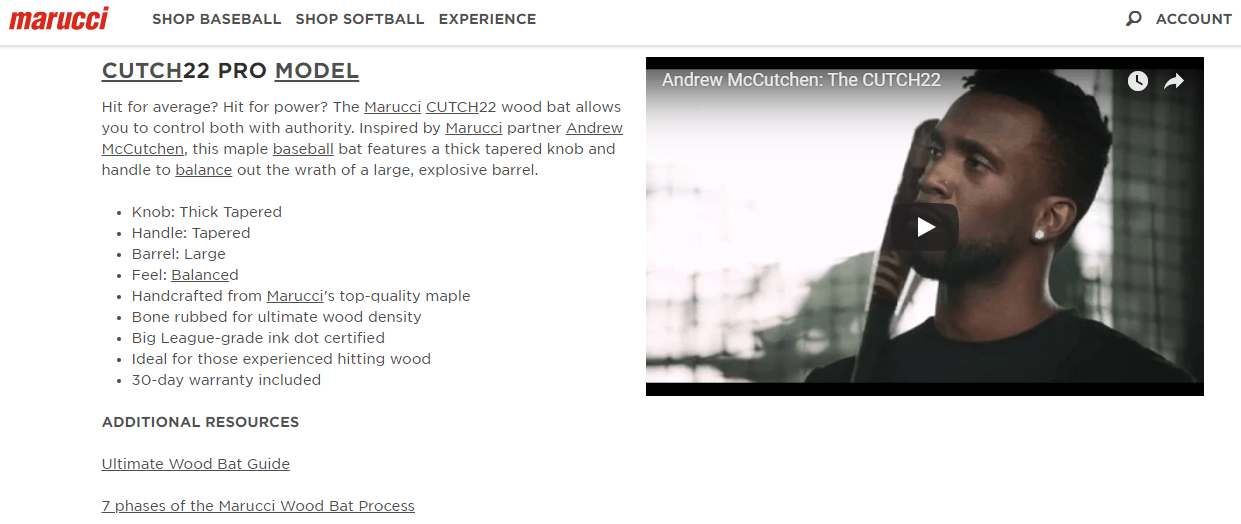
5. Ecommerce Product Page Must Feature a Clear Call-to-Action
Another important factor that can help you boost ecommerce conversions is the call-to-action (CTA) on your ecommerce product pages. Make sure that each product page features a clear call-to-action.
If you want people to buy, you need to tell them to buy. That’s why it is important to have a clear CTA that tells shoppers what they should do next. Don’t try fancy CTAs. You can be direct with phrases such as “add to cart” or “buy now.”
Use a color that makes your CTA button highly visible on your product page.
Fashion brand, ASOS, uses prominent CTAs on their ecommerce product pages. They also allow customers to mark the items they like as a favorite.
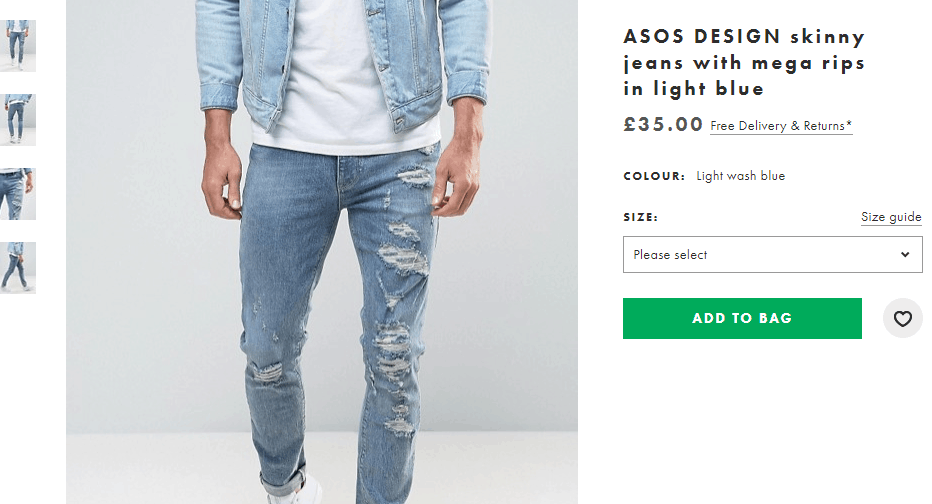
6. Increase Trust with Customer Reviews and Ratings
Product reviews and ratings build trust, and that trust increases conversions. They can clear any doubts that your prospects might have about a product and help them make a purchase decision.
Many shoppers prefer to seek advice from someone they know before they buy a product. However, 85% of consumers today trust online reviews as much as personal recommendations.
People often check what previous buyers have to say about a product. This helps them analyze if it’s the product that they’re looking for.
That’s why it is important to put social proof such as reviews and testimonials on your ecommerce product pages. You should encourage your customers to review your products.
Want to know how?
One easy way to do so is to send them an email post-purchase to ask for a review.
Many customers don’t have a lot to say about your product. So you should make things easy for them. You can just ask them to leave a quick rating out of five. If they want to write more, allow them to send their feedback too. But it shouldn’t be compulsory to write.
Along with helping other users, customer reviews also help you understand what they like or don’t like about a product. This can be used as a huge opportunity to improve customer experience.
Even if the review is bad, you don’t have to worry too much about it. A healthy ratio of positive and negative reviews helps customers believe that they are genuine. However, too many bad reviews are a red flag.
Wondering how to deal with negative reviews?
When a customer leaves a negative review, it is your duty to reach out to them to solve their problem. Listen to them, ask questions, and help them with what they really need.
Once they are happy, you can politely request that they edit their review. Solving customer problems can help you build loyalty and credibility.
There are customers who don’t have the time to read reviews. For them, you should display average review score summaries on your ecommerce product page. This will help them get an idea of the overall ratings at a glance.
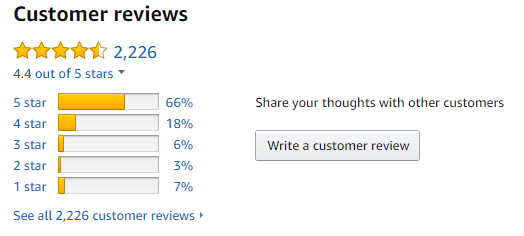
You can also feature customer photos when they share them with you. This will help you increase credibility, trust, and conversions.
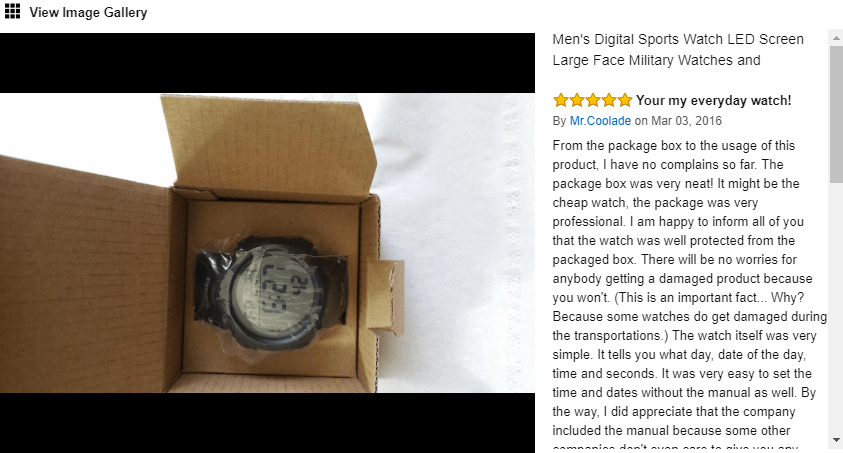
7. Upsell and Cross-Sell Relevant Products
Though an ecommerce product page should focus on selling that product, you shouldn’t miss the chance to promote other products.
You can recommend relevant products or other similar products to your shoppers when they’re on a product page. This can help you engage them and encourage them to make more purchases. It can also help your prospects with their shopping needs.
Many ecommerce brands use upselling and cross-selling techniques to maximize average order size and revenue.
Ecommerce giant, Amazon, displays relevant products from the same brand and other similar products on their ecommerce product page. They also showcase products that are frequently brought together to help customers buy everything they need at once.

If a customer is on an ecommerce product page of Apple iPhone X, for example, you can suggest relevant products such as a case or screen protector.
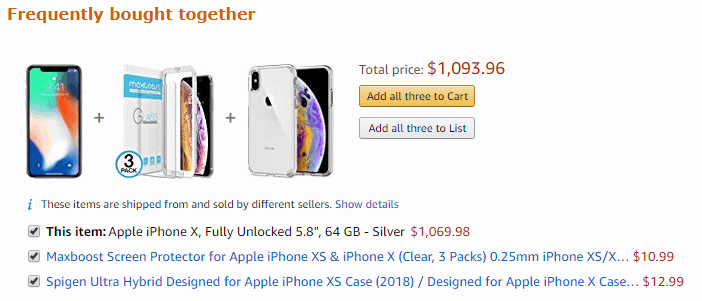
Sometimes, personalized recommendations based on the products they viewed or bought recently can also improve conversions.

8. Give Your Ecommerce Product Page an Engaging Title
It’s crucial to give your ecommerce product page a catchy and engaging title. After all, the title is the first thing that anyone visiting your ecommerce product page will see. It’s that one-liner that can hook the attention of your visitors.
You must also make it a point to let the title stand out.
Want to know how?
Increase the font size and place it at the top or center of the page, above the fold. You can also try to use a color that it is in contrast to the other elements around, including the background color.
People don’t just look at the thumbnails of your products before choosing to make a purchase. They place a lot of importance on the title of the product as well. Getting both right is the perfect recipe for the success of your ecommerce product page.
9. Ecommerce Product Page Speed
The speed with which your ecommerce product page loads is of paramount importance. Everyone is pressed for time, and this has reduced the attention span of buyers. In fact, according to a study by Akamai, a 100-millisecond delay in your page loading speed can reduce your conversion rates by 7%!
While you need to keep media elements on your ecommerce product page to make it attractive, it should be your goal to make the page as light as possible.
To test your page loading speed, you can use Google PageSpeed Insights. It’ll not only give you the whole picture of your page loading speed but will also give you suggestions to improve the same.
10. Create Urgency
One of the best methods of improving the conversion rate of your ecommerce product page is to create urgency. You must leverage the power of FOMO (fear of missing out) and get your customers to think that they may lose a great opportunity.
One way of doing this is by announcing a limited time sale. You must ensure that you make them realize that they’ll miss out on the sale if they’re late.
You can do so by adding a countdown clock. Another way of doing it is by letting your customers know that a limited quantity of the products is left. This might just give them a nudge to make the purchase as they may end up losing the product if they don’t.
Amazon does this extremely well during their Deal of the Day sale. Every ecommerce product page has a timer next to the product name. Some of the products even have the quantity in stock listed as well. This creates an urgency in the minds of their customers.
11. Pricing & Shipping Costs
It’s obvious that you need to show the price of the product that your customers are purchasing.
However, one aspect where most ecommerce websites fail is the shipping cost. Very few ecommerce product pages list the pricing and shipping information transparently. Usually, the shipping and VAT charges are added later on. This can put off your customers.
So, what should you do, instead?
Instead, try to be more transparent about your charges in the first place. Show your shipping charges and the complete cost of the purchase right on the ecommerce product page.
This will help you win the trust of your customers. To make the offer even sweeter, you can offer free shipping to your customers.
Note how Newegg has put up their pricing clearly on their ecommerce product page. They’ve also mentioned that they offer free shipping. This makes the process simpler for their customers.
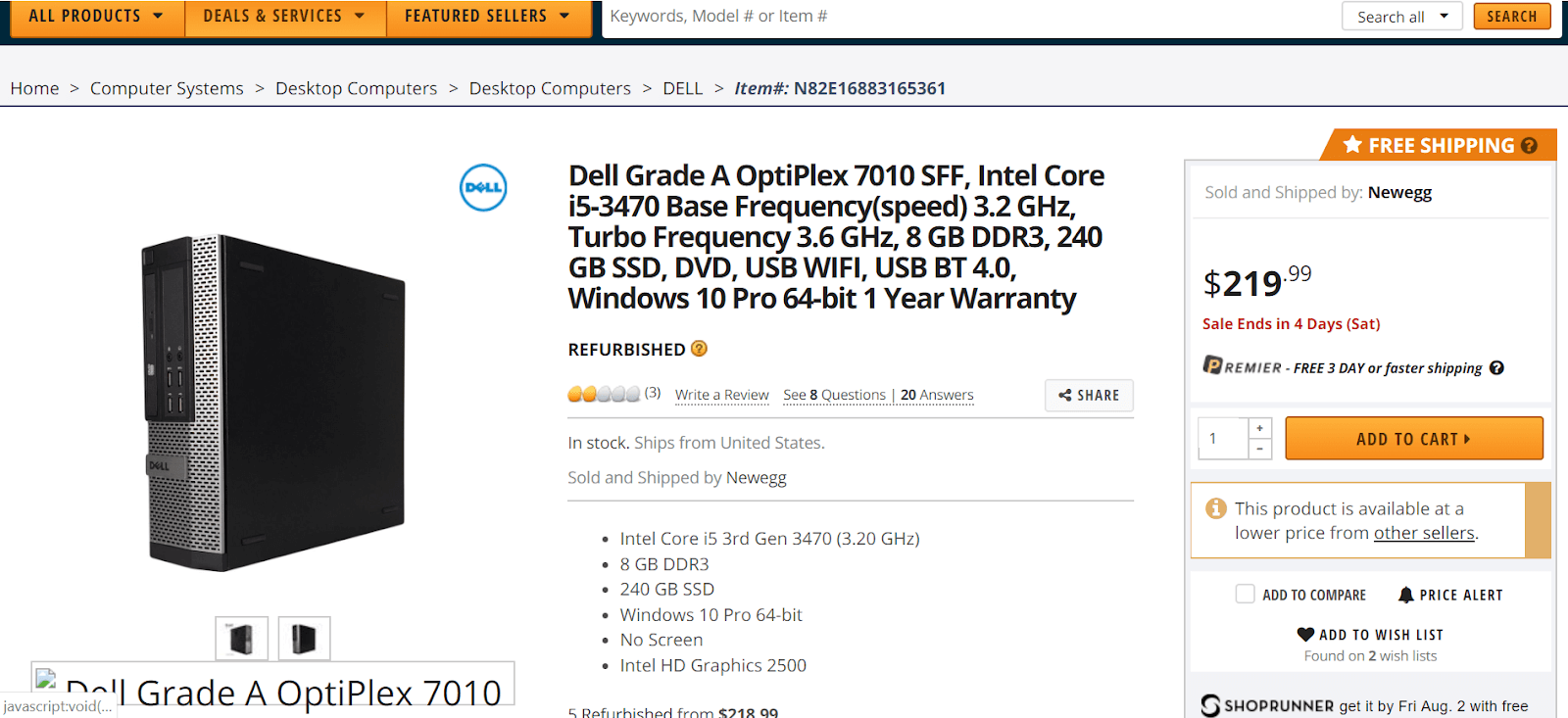
12. Display the Return Policy on Your Ecommerce Product Page
Your goal should be to remain as transparent as possible with your customers. A great way of doing this is by outlining your returns policy on the ecommerce product page. Your customers must know the steps that they may need to take if they wish to return the product.
At the same time, they would know what they’re getting into by purchasing the product. A clear returns policy on the ecommerce product page makes things clear for them as well. This can reduce the conflicts that might arise post the purchase as well.
Sephora, for example, does this well on their ecommerce product page. You can conveniently spot their shipping and returns policy.
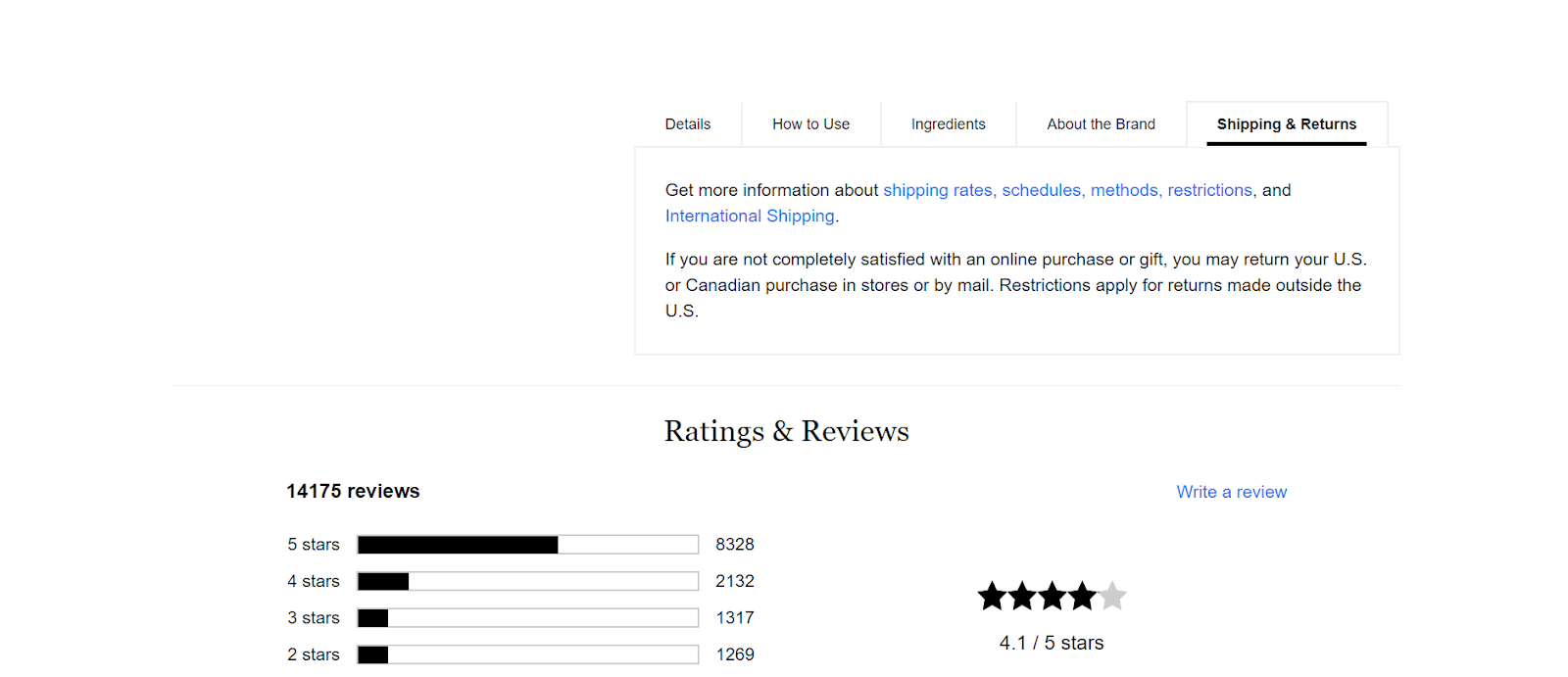
13. Q&A
It’s natural for your customers to have some questions regarding your products when they visit your ecommerce product page. While they can, of course, ask them on the live chat, it helps if you have a few common ones listed on the page itself.
In addition to the FAQs, you should give your customers the option to ask and answer questions on your ecommerce product pages. This way, you’ll be able to crowdsource all your queries and their answers, making things simpler for your customers.
BestBuy uses this method for their ecommerce product page. Note how they’ve put up a link to questions right above the image of the product.
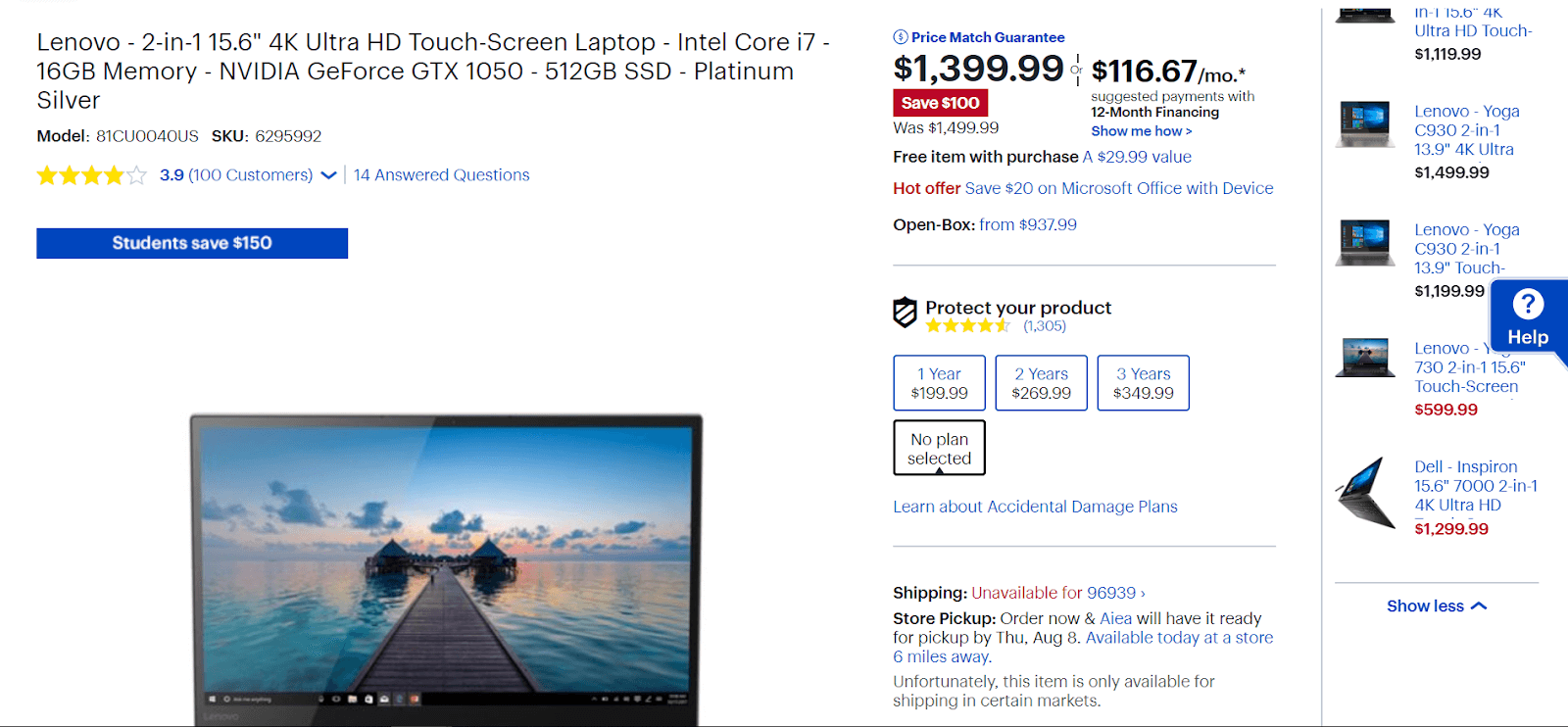
FAQs
Q1. What is a product page?
A. It’s a website page describing the specifications or particulars of a service or product. These can include the brand name, manufacturer information, features, specs, reviews, etc.
Q2. How do you create a product page?
A. The following are tips for creating effective product pages:
- Use quality images showing different product angles.
- Maintain a consistent design on all product pages.
- Indicate pricing using a contrasting color and highlight discounts or offers.
- Include calls-to-action.
- Leverage social proof like star ratings, reviews, etc.
- Personalize recommendations.
- Write informative descriptions.
- Include shipping information.
- Add social sharing buttons.
- Use intuitive layouts.
- Create urgency through sale countdown timers, low stock alerts, etc.
Q3. How do you present products on your website?
A. Considerations when presenting products on your website include:
- Don’t offer too many product choices.
- Allow for easy navigation.
- Maintain uniformity across pages.
- Create persuasive copy.
- Use quality visuals and experiment with augmented reality, image rotation, etc.
- Push top offers, best-selling, recently launched, etc., above the fold.
- Include additional details when mousing over an image.
- Recommend related products.
- Use horizontal and vertical product layouts.
Q4. How do you create a product page in Shopify?
A. You can use Shopify page building apps or create pages from scratch using the following steps:
- Open your Shopify dashboard.
- Pick a theme from the library.
- Click on Customize, which directs you to the theme you chose.
- Customize your page layout depending on preferences.
Q5. How to add products to ecommerce pages?
A. Depending on which platform you use to create your ecommerce page, head over either to the Store Products or Products page and Add New.
Then, add product details, including categories, images, videos, description, name, price, inventory, shipping, etc. You should also indicate if the product is on sale, size options, color choices, and the return policy.
Finally, once you’ve added all of the required information, publish your page.
Q6. How to create killer ecommerce product page?
A. For the best results with your ecommerce product pages, keep these tactics in mind:
- Use large images.
- Enable 360-degree viewing, zooming, rotation, etc.
- Use product descriptions showcasing function, target audience, unique qualities, and why the viewer should buy.
- Include ratings and reviews.
- Use clear CTAs.
- Recommend other products.
- Eliminate doubt with clear pricing, sizing, quality, and return policies.
- Leverage scarcity and urgency.
- Use exit-intent pop-ups.
- Include social buttons.
- Make product pages mobile-friendly.
Q7. How to optimize ecommerce product pages?
A. Using these tactics can help you optimize your ecommerce product pages:
- Use consistent branding.
- Include more than one high-quality image.
- Use relevant keywords in descriptions and titles.
- Share reviews and testimonials.
- Avoid cluttered images.
- Incorporate video descriptions.
- Recommend, upsell, and cross-sell relevant products.
- Improve page speed.
- Display pricing, return policy, shipping cost, etc.
- Use persuasive calls-to-action.
- Optimize for mobile.
- Create urgency.
- Offer visitors the option to ask questions about the products.
Q8. How to rank ecommerce product page?
A. Following these guidelines can help you rank your ecommerce product pages:
- Run frequent technical audits to deal with duplicate content, bad URLs, crawling issues, etc.
- Include quality images and videos.
- Have a keyword strategy.
- Share customer reviews and testimonials.
- Include FAQs.
- Create unique descriptions.
- Optimize meta descriptions and titles.
- A/B test your landing pages.
- Use structured data to highlight star ratings, price, reviews, etc.
- Minimize load time and optimize for mobile.
Q9. What style of ecommerce product pages has the highest conversion?
A. Including these ingredients in your product pages can boost conversions:
- Breadcrumbs
- Unique and catchy titles
- Product details
- Fast-loading and detailed images with zoom-in options
- Videos showing real people using the products
- 360-degree views
- Wishlists
- Product options: sizes, styles, and colors
- Calls-to-action that stand out
- Live chat
- Ratings and reviews
- Urgency
- Upsells and cross-sells
- Social sharing buttons
- Recently viewed
- Number of views (if worth bragging about)
Q10. What can you test on an ecommerce product page?
A. Features you can A/B test on your ecommerce landing pages include:
- Page layouts
- Headlines
- Body copy
- Navigational organization
- Product images
- Design
- CTA copy
- Visual styling
- Different offers
- Pricing strategies
- Location of sales and discount info
- Prominency of the search bar
- Product videos
- Personalization elements
- Review placements
- Unique selling points
- Engagement tactics like chatbots, quizzes, live chat, product demos, etc.
Crafting Your Ecommerce Product Page
It takes you a lot of time and marketing effort to drive targeted traffic to your ecommerce store. But all of that will be a waste if you don’t optimize your product pages to boost conversions.
You should focus on the points mentioned above to provide a better shopping experience for your customers. This can help you increase conversions and encourage
your customers to shop again.
Which tactics do you use to boost your ecommerce product page conversions? Please share them with us in the comments below.

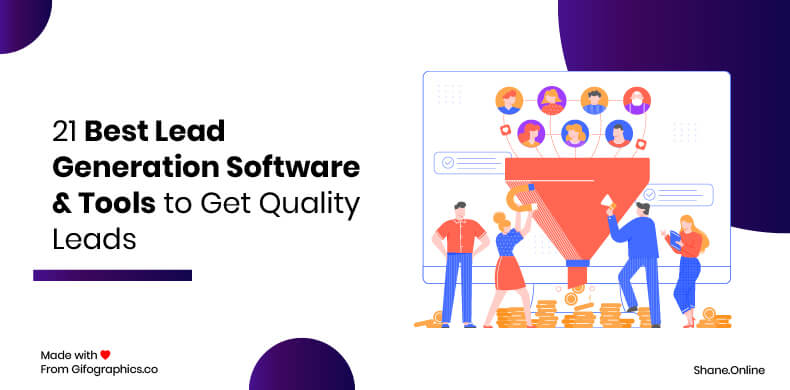
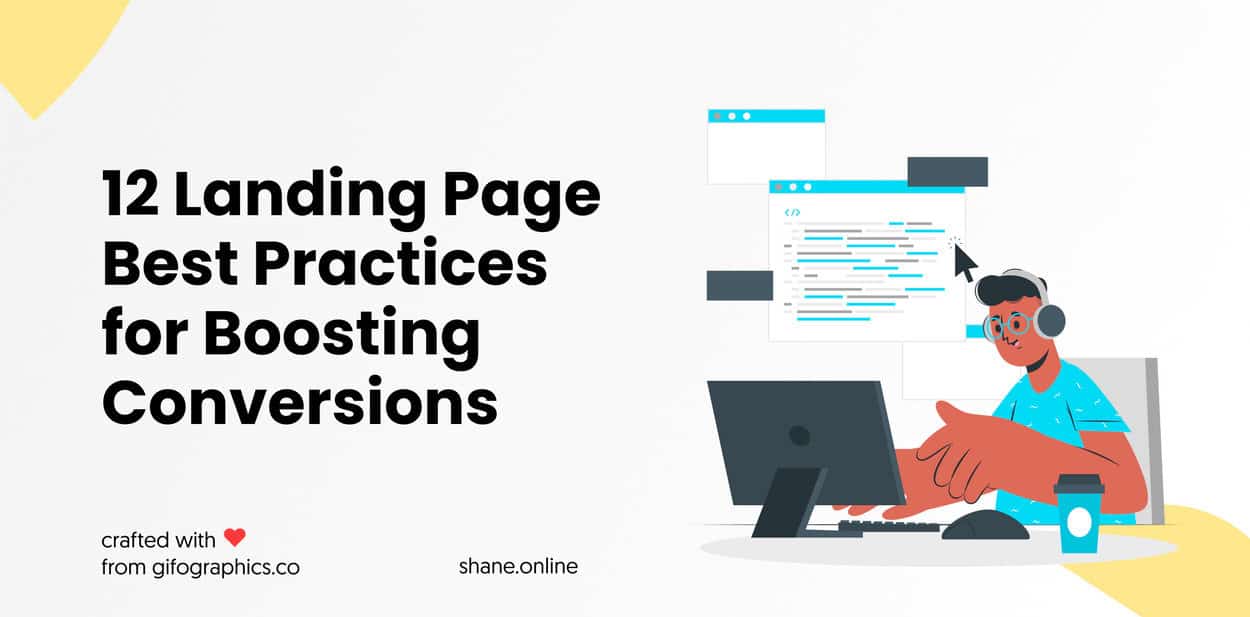
![41 best tools for building a profitable sales funnel in [year] 27 41 best tools for building a profitable sales funnel in 2021](https://shanebarker.com/wp-content/uploads/2020/08/41-Best-Tools-for-Building-a-Profitable-Sales-Funnel-in-2021.jpg)
![top 37 cro tools (free & paid) you need to try in [year] 28 top 37 cro tools (free & paid) you need to try](https://shanebarker.com/wp-content/uploads/2018/02/Top-37-CRO-Tools-Free-_-Paid-You-Need-to-Try.jpg)

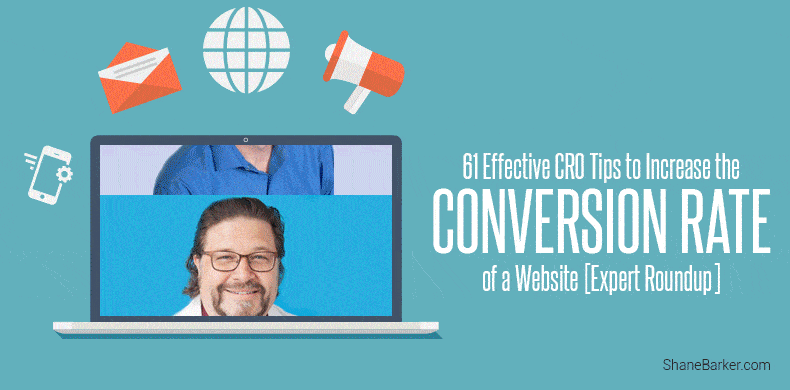
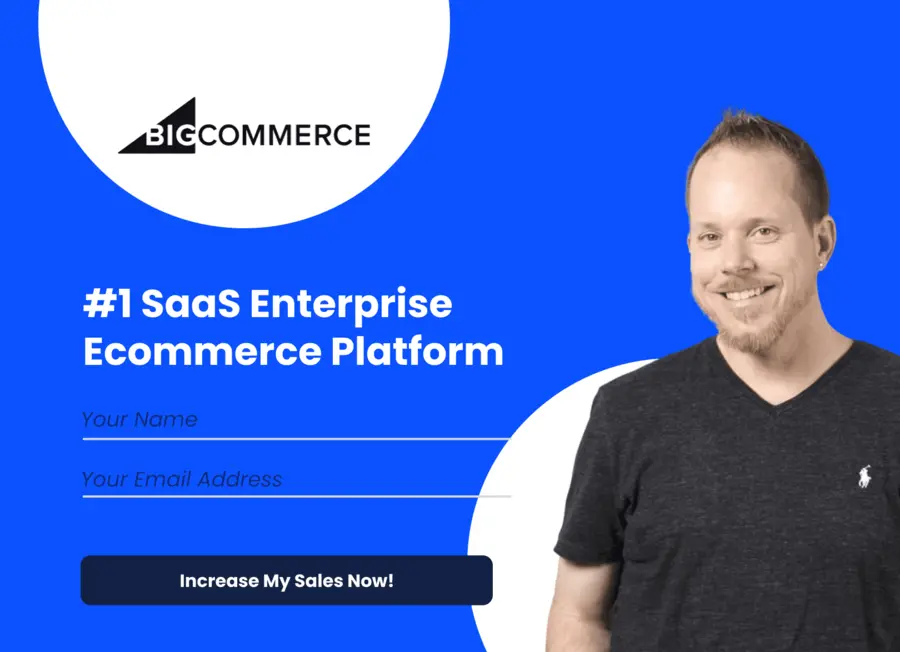

Nice article. Short and easy to implement.
It’ really an informative article.!!
It’s amazing, thank you so much.
Nice!
Awesome resources!
Thanks for sharing such a good article. This is really helpful.
Some genuinely nice and useful info on this blog.
Thank you so much. I’m glad you feel that way.
Really informative blog article. Fantastic.
Really informative article. Really looking forward to read more.
I’m glad you loved it. Thank you so much, your comment really motivates me to share more of such information.